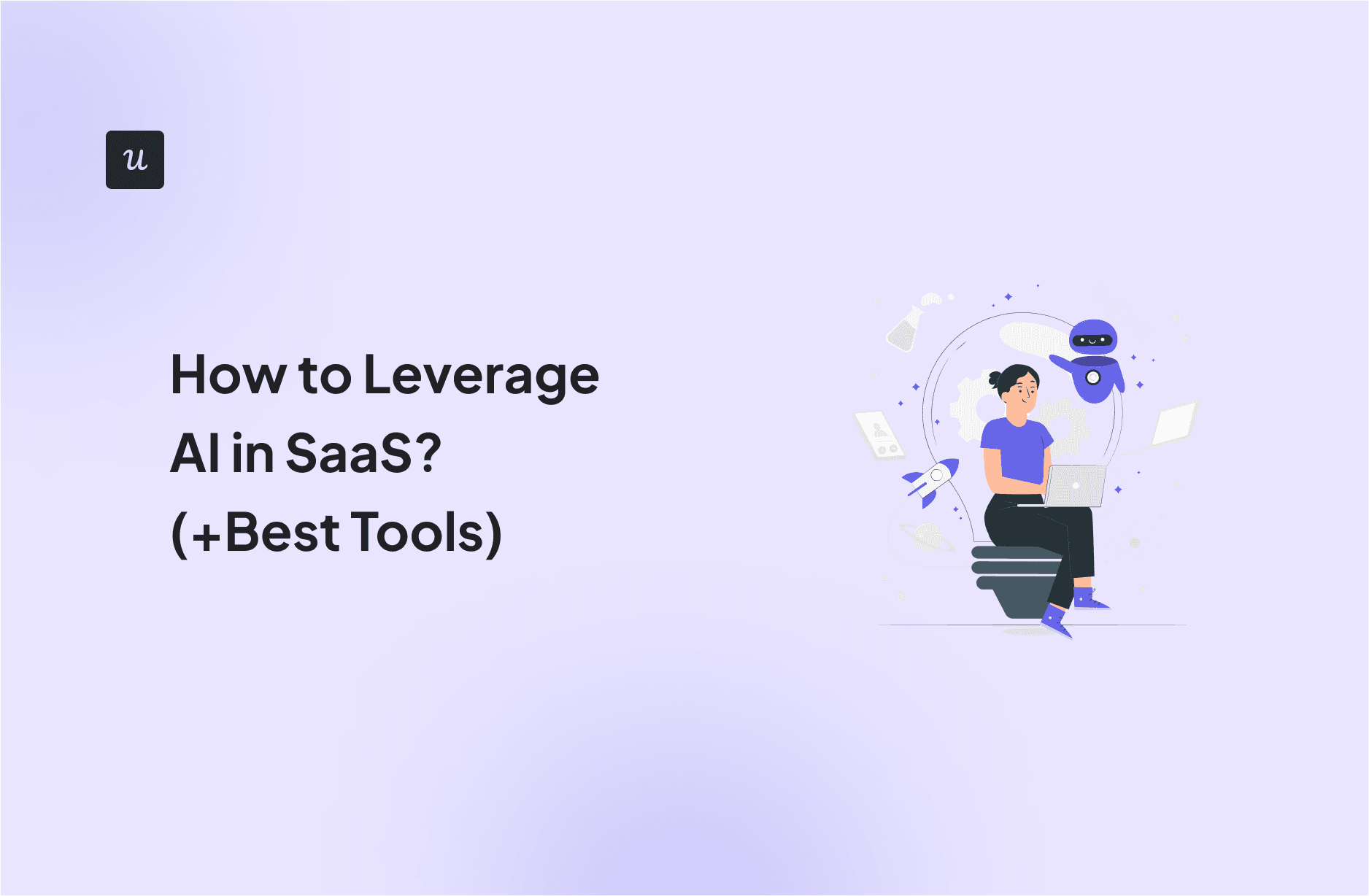
Generative AI has changed how tech companies do business. About 73% of U.S. companies use AI in their operations and the number of jobs requiring AI has increased by 450% since 2013. In 2023, over 26% of investments in American startups were directed toward AI-related companies.
This includes the SaaS industry too. From marketing to product management and customer success, AI is improving productivity, helping teams make better decisions, and improving customer experience.
In this article, we explain:
- Why investing in AI in SaaS is a must.
- How to implement AI to build better products.
- What AI tools you can use.
- What challenges and issues to watch out for.
Let’s get to it!
What’s your biggest challenge with implementing AI in your SaaS?
Which AI capability would most impact your product experience?
How are you currently analyzing user feedback and behavior?
You’re ready to see how AI in SaaS can transform your user experience.
Discover how Userpilot’s AI-powered features can help you personalize onboarding, analyze feedback, and drive adoption.
Try Userpilot Now
See Why 1,000+ Teams Choose Userpilot

Why should a SaaS business invest in AI systems?
There are two ways your SaaS company can benefit from AI implementation.
First, implementing AI in your operations can enhance your productivity and enable you to build better products. McKinsey estimates that AI can automate time-consuming and repetitive tasks, like data entry to free up 60-70% of employee time for higher-level tasks.
Secondly, AI improves decision-making. AI algorithms can analyze customer behavior data and user feedback more quickly than humans and spot patterns we often can’t.
SaaS teams can use such insights to offer personalized customer experiences and build products that satisfy emerging customer needs.
What’s the conclusion for companies offering B2B SaaS solutions?
You need to find ways to embed AI into your product to improve the product experience and make it more competitive.
Challenges and ethical considerations of AI in SaaS
Malte Scholtz, the CPO at Airfocus, warns against embedding AI into products for its own sake though. This can be difficult to resist, considering the competitive nature of the SaaS space and customer expectations.
Using AI in a purposeful way to solve specific problems is only one challenge of many.
According to a study by Airfocus, 21% of product managers believe they don’t have adequate skills, which hampers AI implementation. The respondents were also concerned about AI reliability and integration issues, which could break existing processes. As well as ethical and governance considerations.
For example, companies have to rely on on-premise solutions because of data confidentiality concerns. This reduces available options.
Moreover, AI algorithms have been proven to be biased, which can lead to wrong or prejudiced decisions.
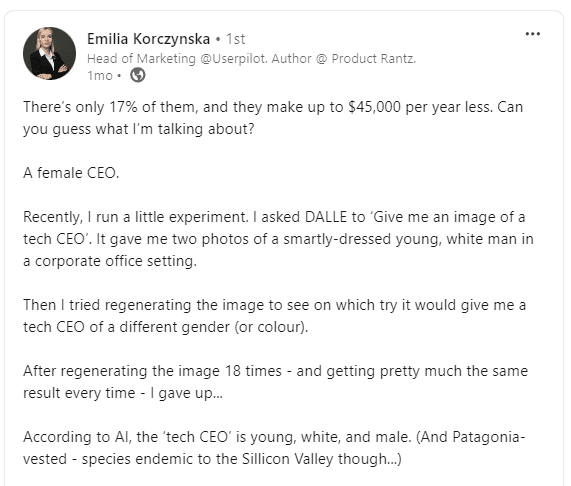
How can SaaS businesses leverage artificial intelligence?
With the basics of AI in SaaS covered, let’s look at examples of how you can use it in your product.
Personalize the experiences for different customers
AI can help companies offer personalized experiences.
As mentioned, AI is excellent at data analysis. This means it can help you segment your users more accurately and identify their unique interaction patterns and needs.
Based on these, you could design onboarding experiences that lead users to value in less time or tailor product messaging to reflect their interests and values.
Generate effective microcopy for marketing campaigns
One area where generative AI has been adopted en masse is content creation. A survey conducted by Authority Hacker has found that 85% of marketers use AI to write content. Articles, social media posts, ad copy, landing pages, in-app microcopy – you name it.
Apart from chatGPT, there are dozens of dedicated AI writing tools, and many companies, including Userpilot, embed such capabilities into their products.
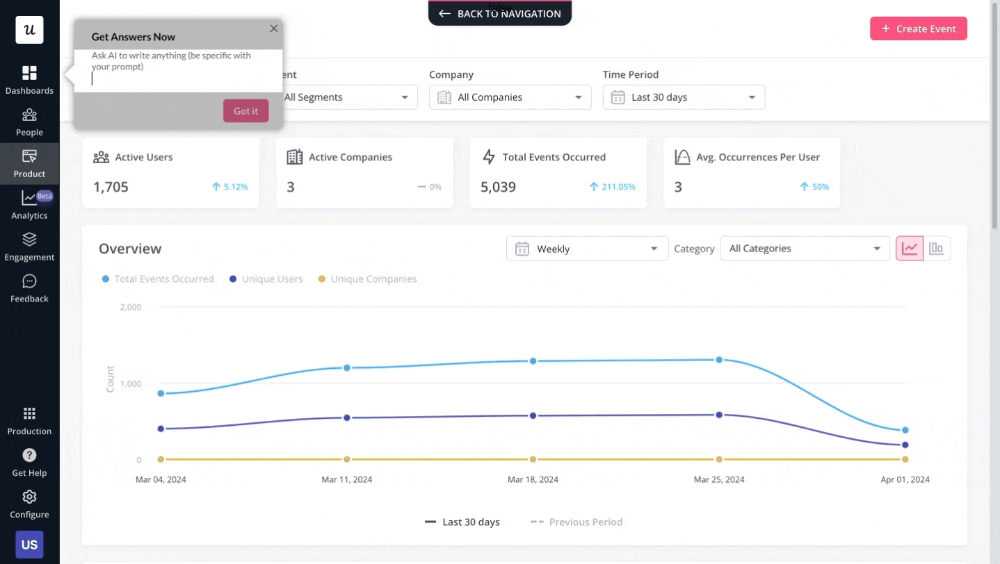
Perform sentiment analysis on customer feedback
AI is not only great at analyzing quantitative data but also qualitative user feedback.
Natural language processing and machine learning algorithms can easily analyze responses to open-ended survey questions or conversation transcripts to identify patterns. And differentiate between positive, neutral, and negative feedback.
Apart from being a massive time-saver, it allows you to close the feedback loops quickly.
Analyze customer data in real-time
AI can provide product teams with dashboard visualizations of real-time data, highlighting trends, anomalies, and patterns.
This facilitates quicker and better-informed decision-making and allows teams to adapt strategies on the fly.
For example, if you identify a drop in a feature usage, you can engage users with in-app patterns to reverse the trend.
Provide timely support through AI chatbots
AI helps SaaS companies to support their customers, quickly and efficiently.
First, AI chatbots are available 24/7 and deal with customer queries 3 times faster. They reduce email, chat, and phone call inquiries also. This means support agents can spend more time dealing with complex customer requests.
Want to know the best part?
67% of customers actually prefer to solve their problems without talking to live agents.
Localize experiences for different segments in your SaaS market
Two-thirds of business users are willing to pay up to 30% more for localized products.
No surprise there. It’s easy to imagine how much easier it is for users to adopt a product with UI and in-app microcopy in their language.
The catch is that professional localization isn’t always viable financially.
Fortunately, AI can help. Thanks to NLP models, you can automatically translate your content into most languages.
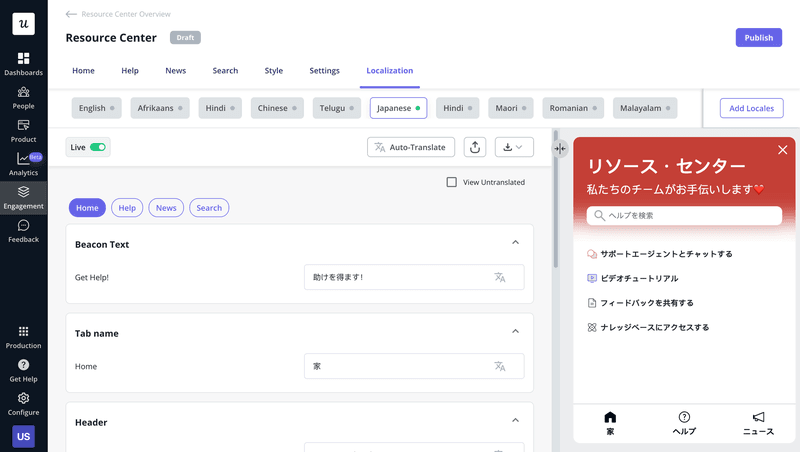
Use AI technology to generate videos to educate customers
Videos are more engaging and memorable than text. Users are more likely to retain what they learned from video content compared to written text.
Unfortunately, creating videos is time and resource-intensive. Equipment hire, location scouting, editing – all this adds up.
Or used to, in the pre-AI era.
AI tools can automatically edit and enhance your footage, generate subtitles and captions, and streamline the creation of visual effects or animations. Heck, you don’t even need to appear in the film because it can generate a very realistic-looking avatar for you.
Use predictive analytics to forecast customer behavior
As AI excels in identifying patterns, it can predict future behavior fairly accurately based on historical data.
Think about it: if hundreds of users behave in a particular way, the odds are that others sharing similar characteristics might act in the same way.
How can you leverage this in your SaaS?
One possible use case is churn prevention. By analyzing the historical usage of users who canceled their subscriptions, AI can identify users at risk of churning. So that you can support them proactively.
In the same way, predictive analytics can help identify customers most likely to upgrade their plans or buy additional products. So you can drive account expansion with messages targeted at the right audience.
The best AI tools for SaaS companies
Considering that AI tools have been around for a while, you probably have your favorite tools already. Here are a few that we find particularly useful for SaaS teams.
Userpilot
Userpilot is a product growth platform. It allows teams to analyze user behavior inside products, collect feedback via in-app surveys, and create personalized onboarding experiences for better product adoption and increased customer satisfaction and retention.
Currently, Userpilot uses AI to power its writing assistant and the localization functionality. This means you can easily create and refine your support resources, surveys, and microcopy, for example, in interactive walkthroughs.
It’s getting better.
You will soon be able to use AI to gain actionable insights from user behavior and feedback data.
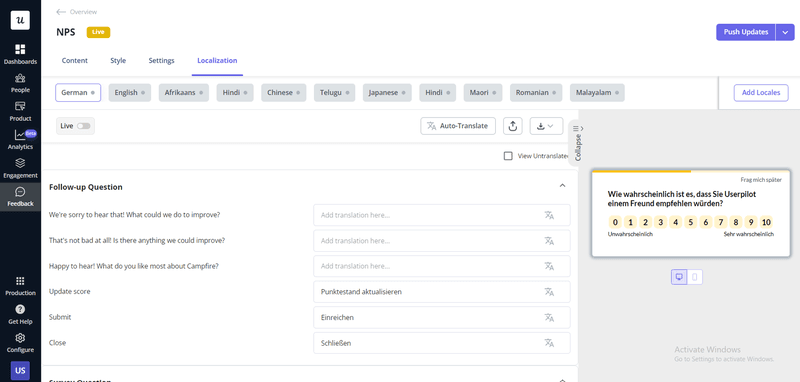
Hotjar
Hotjar is a product experience analytics solution. For many UX and UI designers, it’s a go-to solution for heatmap and session recording analysis.
Hotjar has used AI to enhance its feedback capabilities.
You can use it to generate customer surveys. You enter your goal, like ‘find the pain points in the checkout flow’ and watch the magic happen.
The tool also analyzes the responses for you, saving you hours, and generates a report automatically. And it’s not just a summary – Hotjar offers recommendations on how to act on the insights!
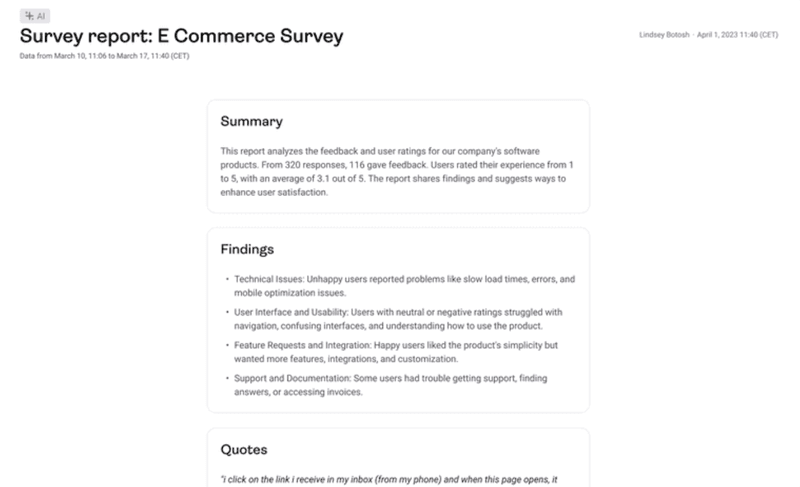
Synthesia
Synthesia is an AI-driven video platform. It enables companies to create videos without any recording, which makes creating product demos, tutorials, onboarding videos, or marketing resources a breeze.
Here’s how it works:
You prepare a script, pick and customize one of the 160 avatars (or build your own), enter the script, and set the voice and language of the avatar. Make final tweaks (optional) and let Synthesia generate the video.
It’s pretty unbelievable how realistic these are.
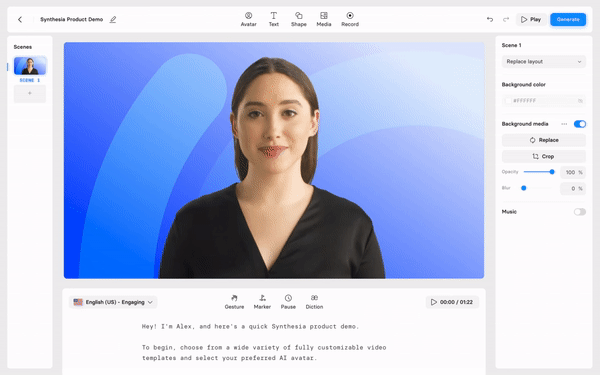
Mixpanel
Mixpanel is one of the best analytics platforms out there. It has all the features that a SaaS team might need to analyze user behavior at all stages of the customer journey and across all platforms.
Mixpanel is a good example of a product that uses AI to solve a genuine user problem: data silos.
Many SaaS team members don’t have the technical skills to analyze data. As a result, they either depend heavily on others – or on their intuition – to make decisions, which may hinder their performance.
Mixpanel’s Spark AI addresses the issue.
Spark is a chat-based reporting tool. You ask it a question and it analyzes the available data to generate a report.
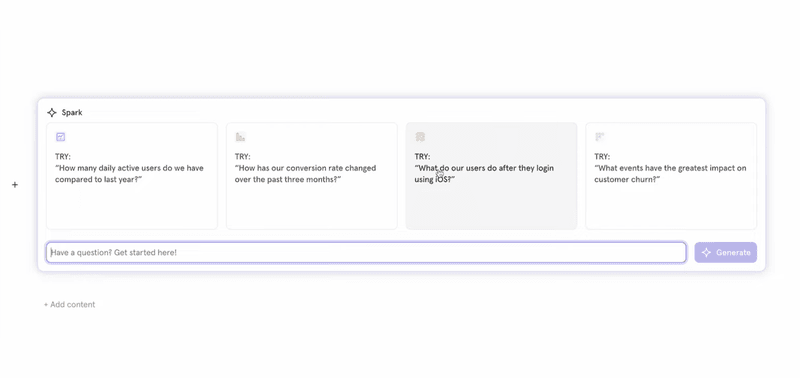
Zendesk
Zendesk is a customer service solution that enables SaaS businesses to offer omnichannel support to their customers.
The platform uses AI to power its chatbots. These are trained on past customer conversations and their most common problems to offer accurate assistance.
AI also organizes and prioritizes requests for support staff to ensure they need all the information they need to assist the customers. It also provides solution recommendations and relevant resources.
The AI functionality can also find gaps in your resource center content and create comprehensive articles from a basic outline.
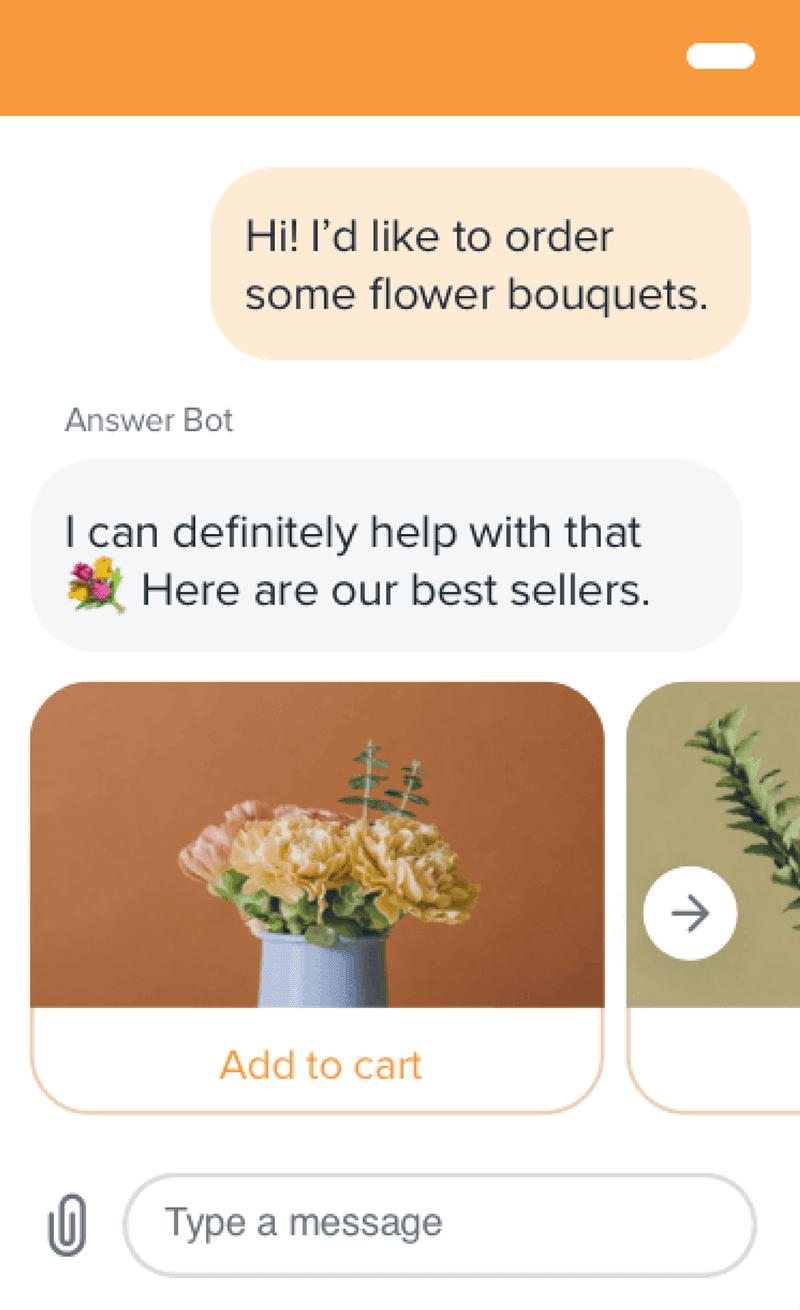
ChurnZero
ChurnZero is a customer success platform. It enables SaaS teams to onboard new customers, and drive product adoption and account expansion.
ChurnZero’s Customer Success AI allows you to create content like emails or guides. Just type in your task and the feature will generate the text for you. You can then use one of its pre-built editing options to further refine the copy.
It doesn’t stop there.
The tool streamlines the process of creating customer briefs. In just 1 click, you can generate a report summarizing all the data about a customer, like their overall health, engagement trends, or communication history.
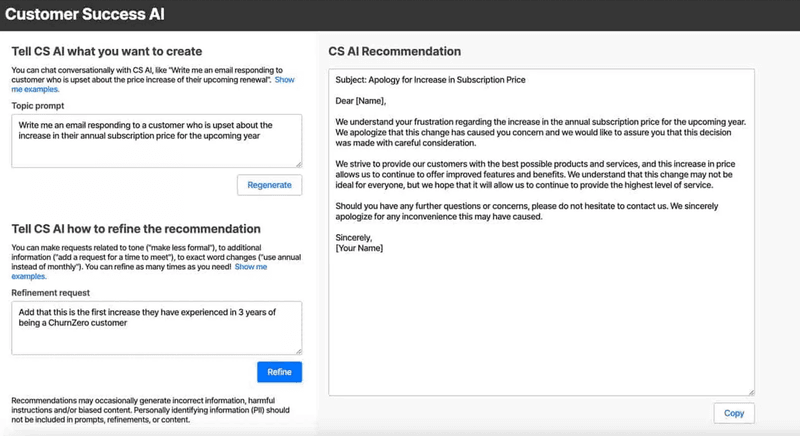
Conclusion
There’s no escaping from AI in SaaS.
Even if you currently have no need or capability to embed AI into your product, you can still harness its power to drive your SaaS growth. Simply look for AI SaaS solutions that can help you optimize your internal process and analyze data efficiently and accurately – like the ones above.
Why not start by booking a Userpilot demo to learn more about its AI capabilities?







